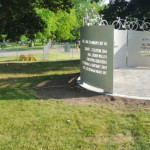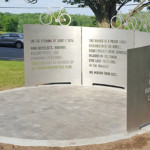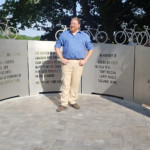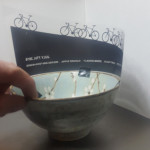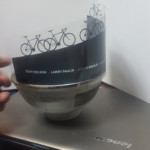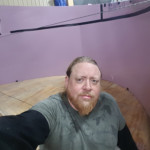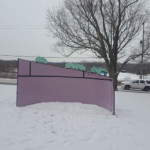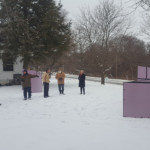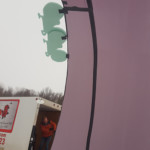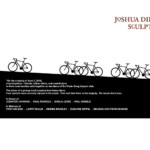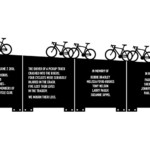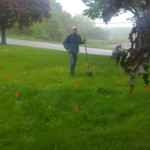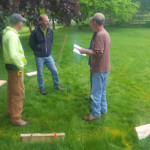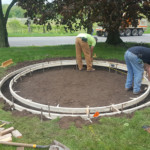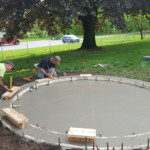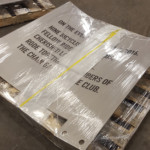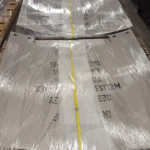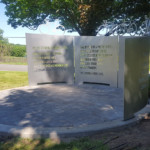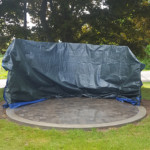“On the evening of June 7th, 2016, nine bicyclists, friends, fellow riders and cherished loved ones rode together as members of the Chain Gang bicycle club. The driver of a pickup truck crashed into the riders. Four cyclists were seriously injured in the crash. Five lost their lives in the tragedy. We mourn their loss.”
The Process
I was approached about a year and a half after the crash by David Rachowicz, the director of Kalamazoo county parks, who had seen my work with the nearby Tom Harding Memorial and was curious if I could put together some designs. I’d already been approached once or twice by other groups– local political contenders hoping to boost their public image by spearheading a memorial, activist groups, one of which wanted to literally hammer together a memorial out of the still bloody bikes. The crash had made the international news, and that led to both an outpouring of sympathy and support, and a few more ghoulish proposals from people hoping to somehow turn the victims tragedy and literal blood into their own political opportunity or soapbox. I asked David who he was there on behalf of, and he said “We’ve been talking with the families of the victims.”, which was what I needed to hear.
I met with the club once on a grey day in early fall, in a dark windowed room overlooking both the site of the crash and the eventual location of the sculpture, to talk about the process of how these kinds of public project generally come together. We built some trust, and a month or so later, I made models for 5 different designs- 3 of bronze figures with bikes, a more architectural shrine made of bike frames, and this simple wall. The group chose the wall immediately and unanimously.
The original design of the wall was very close to the final design– a slope with five empty bikes moving up it, placed to correspond the rough positions of each of the five slain riders before they were killed, with the wall curved to create a sheltering, protected circle. The bikes are riding toward the precipice at the highest point of the wall. The angle of the slope was adjusted to match the slope of the road, and the monument placed so that it’s possible when standing in the middle of the circle to superimpose the ghost bikes onto the roadway where they rode moments before the tragedy.
The original plan was for one single, huge plate of stainless steel to be bent into a 12 foot diameter, but production constraints made it easier to split the piece into four individual panels, which was a better design anyway once we saw it. As the deadline loomed, Studio 431 of Landscape Forms Inc, a local company that manufactures benches, lampposts, and many other municipal fixtures as well as custom architectural elements, came on board and most of the physical production work was donated by both them and many of their suppliers.
This project had more media attention, more emotionally involved parties, and more stakeholders than anything I’d worked on previous to it.
Not only that, but the actual physical production was more cooperative, and shared between more hands than I’ve ever been a part of. As is almost always the case with big public art, I will get credit as the artist for the project and the design, but those who put in the (in this case, donated) hours to cut metal, roll huge sheets of steel, run structural models, make phone calls, hustle for donations, clear permits, coat stainless steel, pour concrete, and finish and weld, go unmentioned.
This design came to fruition through the work and material donations of so many craftsmen all over the state, and without their work,and the amazing coordination via Studio 431, there’s simply no way we could have ended up with a piece this fine in such a short time. All credit due to Casey, David, Ron, John, Rich, Tom, Gene, Steve, Nate, Adam, and to everyone who put their hands and sweat onto the memorial.






